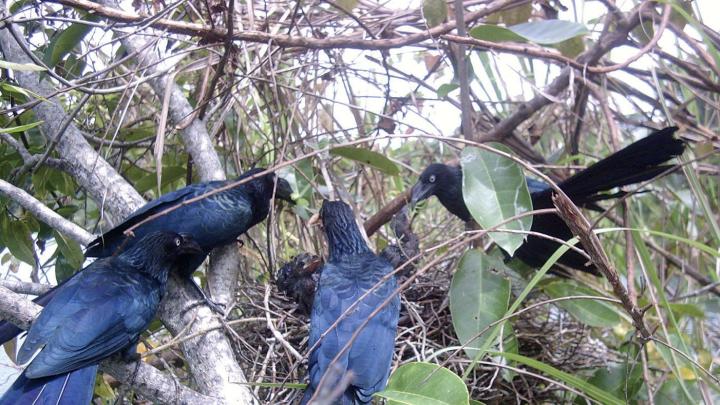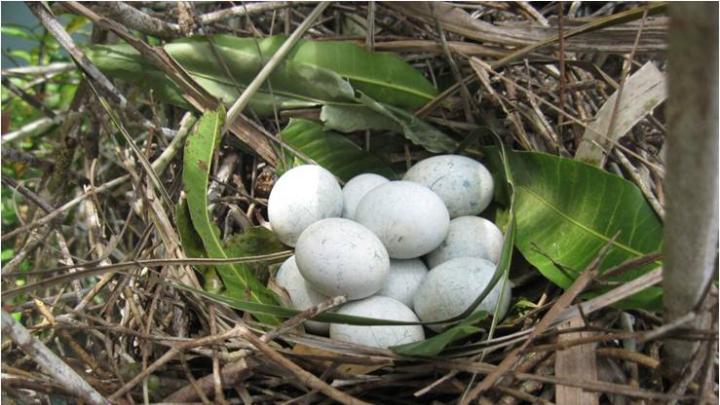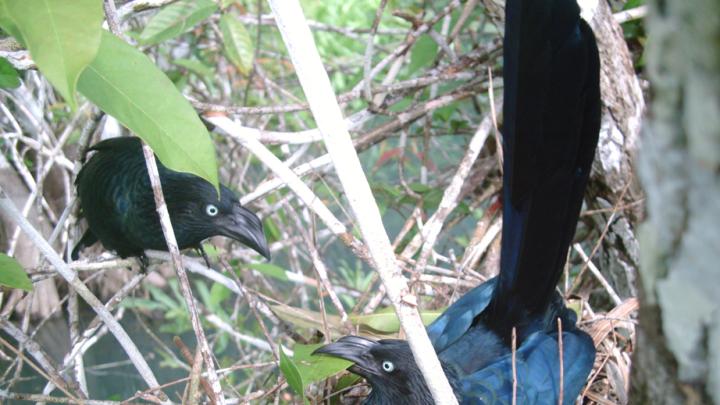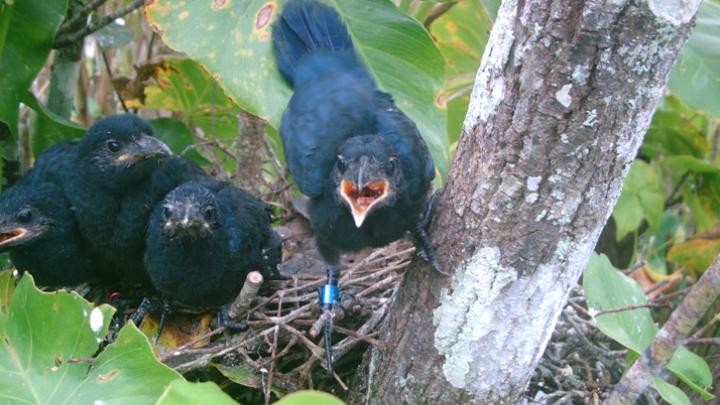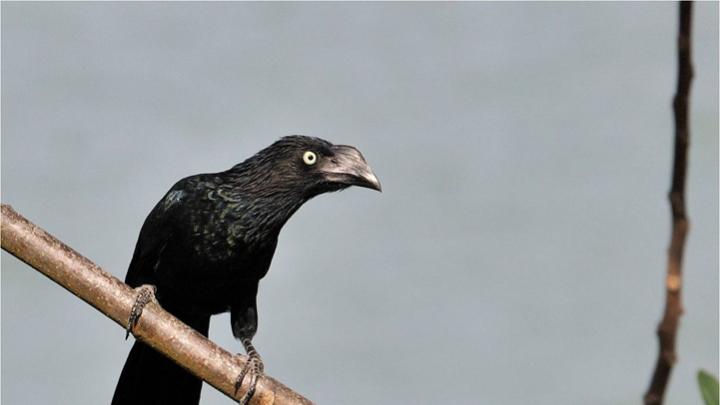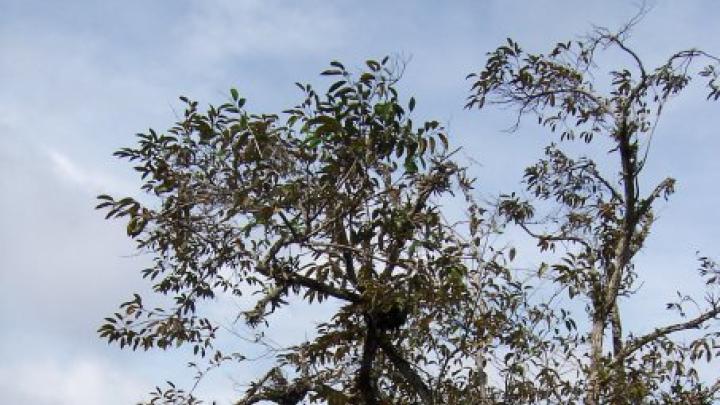Paddling around the forested edges of a crocodile-infested lake in Panama, biologist Christina Riehl ’05 is gaining new insights into the bizarre cooperative breeding behaviors of certain tropical cuckoos.
These greater anis (Crotophaga major) gather in communal groups at breeding time—raising offspring together in a single nest, every adult sharing in the work. What is remarkable is that these communes consist of birds that aren’t necessarily blood relatives.
For half a century, the study of animal cooperation has been dominated by the theory of “kin selection.” According to this model, animals cooperate only if they stand to gain something—if not for themselves, then for their kin. This assures that they always pass along some of their genetic material to the next generation. But when it comes to raising their young, the anis behave in ways that cannot be explained by kin selection alone.
Anis form useful associations with unrelated mating pairs, expending great effort to raise the young of others. This makes them rather like humans—and unlike most other animals on earth.
Riehl’s research thus raises new questions about the importance of kin selection in the evolution of cooperation. She seeks to understand how cooperation can evolve among unrelated individuals, particularly when competition among group members is intense.
Since 2006, working under the auspices of the Smithsonian Tropical Research Institute, Riehl has circled Gatun Lake, part of the Panama Canal, to examine as many as 45 ani nests per season. Because almost all these low-lying baskets of leaves and sticks hang over the water and cannot be reached from land, scientists have rarely studied them, but Riehl can reach most of the nests by standing up in her boat. The work is hazardous even without the snakes and crocodiles lurking in the thickets: anis breed during the rainy season, when downpours are torrential and thunderstorms sweep the lake.
Riehl labels every egg that is laid in the communal clutch, takes DNA samples, and also makes note of which birds in the commune are performing what tasks, looking for the colored bands she has affixed to their legs during her annual winter field trip. Communes consist of two, three, or more unrelated pairs of adults.
She has learned that, although the anis work together cooperatively, some work much harder than others. In every commune, one male ends up performing all the nighttime labor of sitting on the clutch of six to 12 eggs in the nest. While other group members sleep, the bird on the late shift performs extra work for no apparent additional gain in the fitness or survival of his own offspring—again, breaking the rules of kin selection.
The anis’ communal lifestyle isn’t totally altruistic. Although females cooperate in tending the nest, they simultaneously seek to improve their own offspring’s chances for survival by tossing other females’ eggs out of it. (Riehl collects ejected eggs from the vegetation surrounding the nest or the shallow water beneath it, including broken eggshells she has numbered.) Here, too, ani behavior is bizarre: of 10,000 species of birds in the world, only a half-dozen engage in this wasteful practice of communal egg-dumping—underlining Riehl’s assertion that “this is one of the most interesting species out there for animal social behavior.”
She has found that, despite the egg-dumping behavior, cooperative nesting yields big payoffs for group members. Not only are large groups better able to defend their nests against predators, they also build their nests in safer locations. Large groups typically build in trees that grow in the lake—less vulnerable to terrestrial animals like snakes. Smaller groups aren’t able to claim this high-quality real estate, so their nests are more frequently attacked. Pairs that try to nest alone can barely raise young at all.
Recently named a Junior Fellow of the Harvard Society of Fellows, Riehl “stands out as a young scientist with a keen sense of what is important to measure in the field,” says Cornell associate professor of natural resources Janis Lou Dickinson, director of Citizen Science at the Cornell Laboratory of Ornithology, who studies cooperative breeding in western bluebirds. Riehl’s findings “provide an unusual example of the importance of direct fitness benefits of cooperation, and stand in contrast to a large majority of studies of cooperative breeding in birds. Counter-examples are important and broaden our understanding of how ecological factors influence cooperation.”
“Scientific debate right now about the importance of kin selection is absolutely vitriolic,” Riehl says. Although she continues to believe, along with the majority of biologists, in the importance of kin selection, she notes that “anis represent a rare exception to the general rule that cooperation evolves among family members.”
